Diamond Kinetics PitchTracker, Rapsodo, and Pitch Tracking Technologies
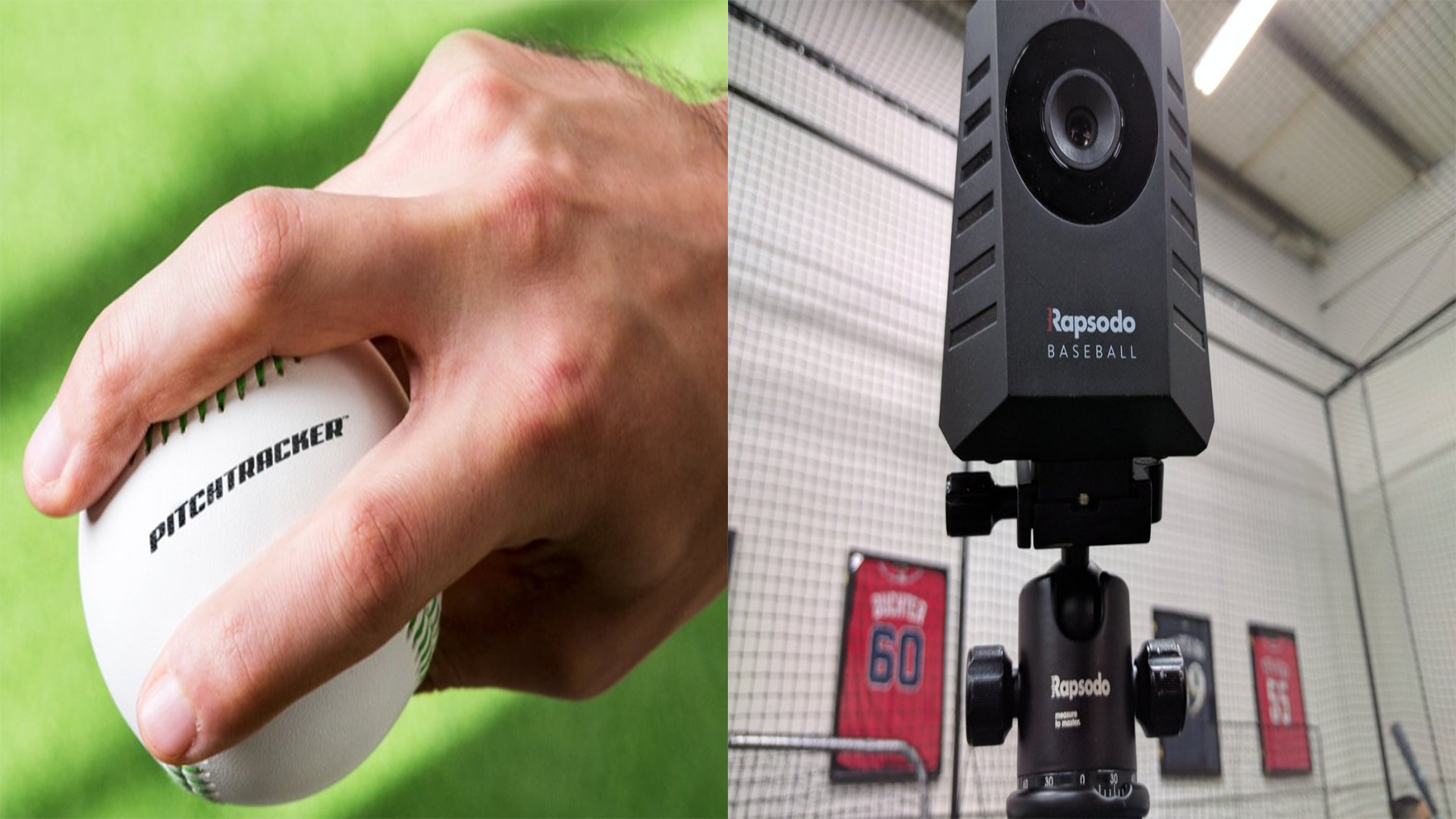
In previous blog posts, we’ve discussed spin rate extensively, including what it is, how it affects pitch characteristics, and how it is useful for pitch development, among other topics. For this validation study, we looked at the performance of the Diamond Kinetics PitchTracker ball in measuring spin rate, velocity, and other metrics, as compared to Rapsodo. We previously validated Rapsodo to Trackman, which you can read about here.
What Is PitchTracker?
PitchTracker uses a “Smart” Ball paired via Bluetooth with the PitchTracker iOS app. Using an internal IMU that detects the motion of the ball, PitchTracker outputs velocity, spin rate, timing, and extension data. Pitch metrics can be viewed live on the iOS app and then stored in individual bullpen sessions, with options to tag pitch type and location.
Earlier this year, we did some preliminary investigation into the accuracy of the PitchTracker spin-rate metric as compared to Rapsodo using our Spinball Sports pitching machine. Our results were very encouraging, showing an R^2 value of .975 between PitchTracker spin rate and Rapsodo total spin, ignoring a few obvious outliers.
https://twitter.com/drivelinebases/status/984245201609740288
Given our initial findings, we decided to investigate further. We had 6 athletes throw a 10-15 pitch bullpen with the PitchTracker ball, with a mix of fastballs and breaking balls. We compared the PitchTracker readings with the Rapsodo.
Spin Rate
First, let’s look at how spin rate data from PitchTracker compares to Rapsodo. Using linear regression (and filtering out a few clear outliers), there is a very strong correlation (R^2 = 0.9856) between the two data sets, with a trend line slope of 1.0175, indicating a near linear, near 1:1 relationship between PitchTracker and Rapsodo spin rate.
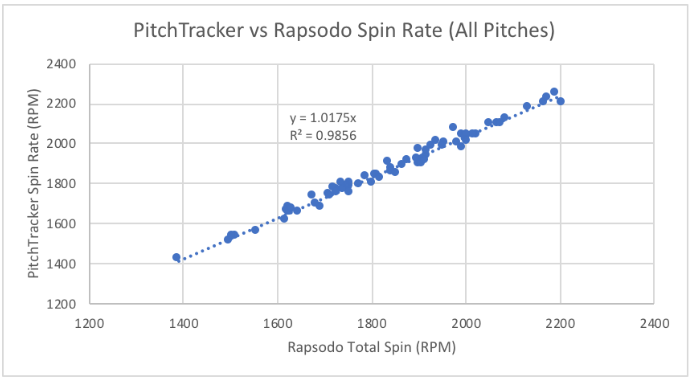
By separating pitches by pitch type, we also see similarly encouraging trends. R^2 values are 0.9737 and 0.9923 for fastballs and breaking balls, respectively, along with trend-line slopes of 1.0171 and 1.0181. This indicates that PitchTracker performs similarly against Rapsodo, regardless of spin direction or pitch type.
While linear regression is useful for showing that two variables are correlated, it doesn’t fully demonstrate the differences between the readings. In this instance, since we are looking at how two instruments measure the same variable, a Bland-Altman plot (differences vs means) is useful to illustrate systematic difference, or bias, between the two measurements.
Here, the mean difference in spin rate (PitchTracker spin minus Rapsodo spin) is 32.3 ± 22.6 RPM, meaning PitchTracker has a bias of about 32 RPM, and we can expect readings to be anywhere from 12 RPM below to 78 RPM above Rapsodo, with 95% confidence. Given that the average MLB spin rate is roughly 2200 RPM, this constitutes a relatively small bias and shows good agreement between PitchTracker and Rapsodo when measuring spin rate.
Velocity
After spin rate, we also compared PitchTracker velocity against Stalker Pro 2 Radar velocity. In comparison to spin rate, velocity readings have a weaker correlation with the testing standard (R^2 of 0.8812 vs 0.9856).
By looking at the same graph but with Rapsodo velocity data, Rapsodo appears to have a slightly better correlation with Stalker (R^2 of 0.9141)
Similar to spin rate, a plot of the reading differences against the mean readings gives more insight into the validity of velocity readings. The mean difference for PitchTracker from Stalker is 0.59 ± 2.65 mph, while Rapsodo does slightly better at 0.33 ± 2.15 mph.
It appears that PitchTracker performs almost as well as Rapsodo at measuring velocity, with a slight edge to Rapsodo. Both have rather small biases and are decently accurate, but both are prone to occasionally misread velocity by 5 mph or more.
Additional Metrics
Besides spin rate and velocity, PitchTracker tracks four additional metrics: timing to plate, extension, delivery timing, and reach back to release timing. In theory, these metrics should be consistent for each athlete repeating his delivery, so we looked at the intra-subject coefficient of variation (CV), a measure of how well PitchTracker can replicate the same measurement.
The full data set can be found here.
Based on this data, the timing metrics from PitchTracker look decently reliable, with coefficients of variation under 10 percent for each athlete. The extension metric had notably higher coefficients of variation, indicating a relatively broad distribution where we would expect to see a narrow distribution.
Misreads/Missed Pitches
As noted before, we had a few obvious outliers with spin-rate readings that were neglected in data analysis. Generally, almost every pitch that did register produced reasonable data. However, roughly one-third of the pitches thrown during data collection did not register on PitchTracker. Though Rapsodo also occasionally fails to pick up pitches, it misses less often and mostly on pitches well outside of the strike zone, while it was harder to predict why and when PitchTracker would miss pitches.
Conclusion
The Diamond Kinetics PitchTracker appears to be a viable, robust measurement tool, taking the convenient form of a leather baseball. In terms of spin rate, the consistency of readings and relatively small error surpassed our initial expectations. Though susceptible to missing pitches and occasional misreads, the PitchTracker performs very closely to Rapsodo for both spin rate and velocity, with timing metrics that appear to be reasonably accurate.
One drawback to PitchTracker is that it only measures spin magnitude, whereas Rapsodo measures both magnitude and direction. As we have have discussed before, both components of the spin vector are important in understanding pitch characteristics. However, given the low price of PitchTracker compared to Rapsodo, its capabilities are impressive and can be a useful, low-cost tool for players and coaches.
Comment section
Add a Comment
You must be logged in to post a comment.
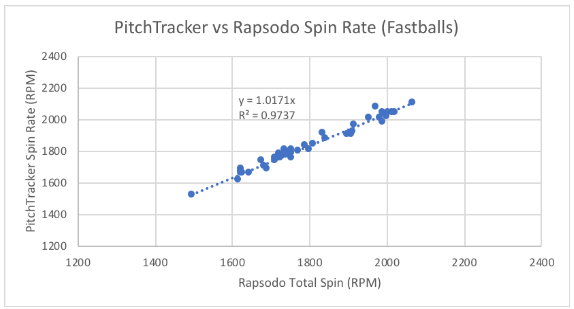
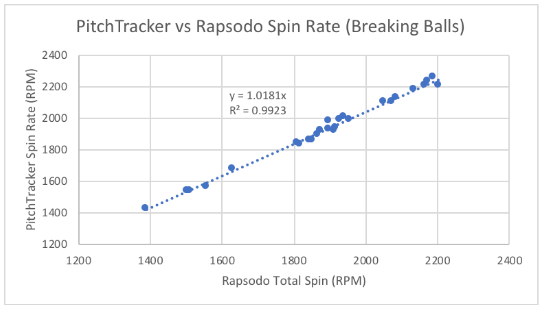
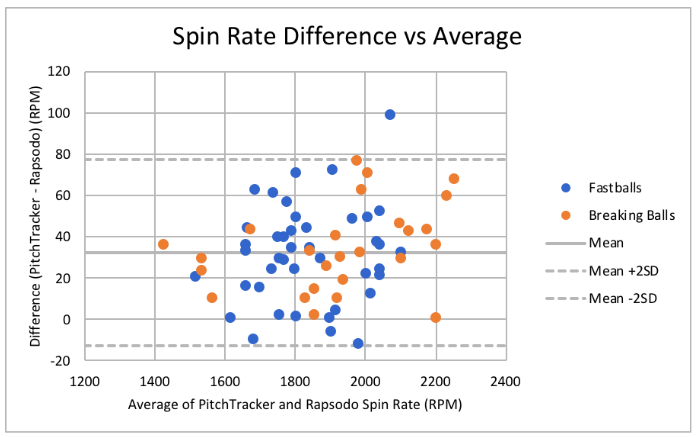
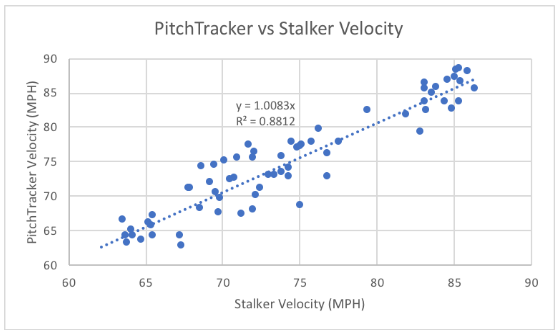
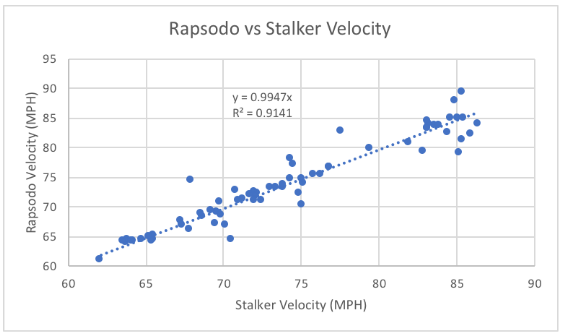
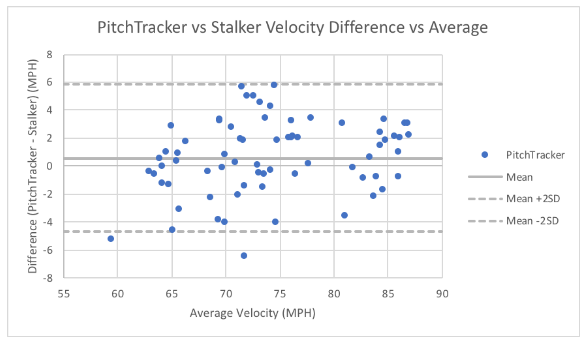
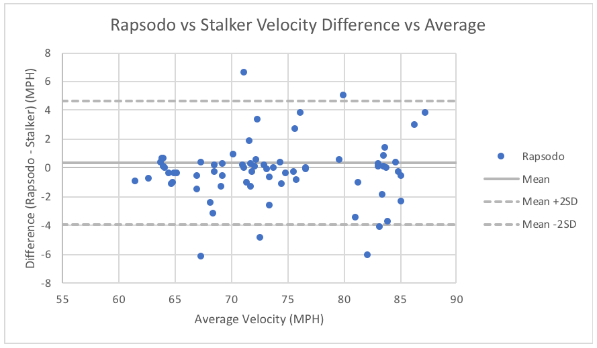

David -
Have you compared PitchTracker’s spin direction measurement vs Rapsodo? It would amazing if it correlated!
Driveline Baseball -
Yep! Check out this blog here for more information on our findings!
https://www.drivelinebaseball.com/2018/07/diamond-kinetics-pitchtracker-rapsodo-pitch-tracking-technologies/
Zachary -
What was the sample size of pitches thrown for the velocity comparison?
Driveline Baseball -
We had athletes throw 10-15 pitch bullpens with a mix of fastball/breaking balls. Those pitches were used for the velocity comparison.
Wesley Hogue -
The DK website says it does measure spin direction. Your post says it doesn’t. Have they made changes since you tested it or did I misunderstand their advertising?
Steve Smith -
Have you done a similar comparison to pitch logic?
Driveline Baseball -
Hey Steve, we have not tested F5’s Pitch Logic Ball yet.